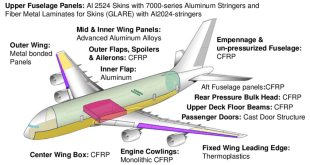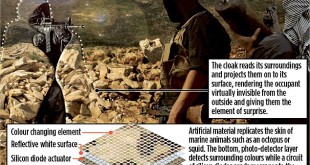Geopolymer concrete—an innovative material in light of the ongoing emphasis on sustainability is a potential alternative to conventional portland cement concrete for use in transportation infrastructure construction. In contrast to portland cement, most geopolymer systems rely on minimally processed natural materials or industrial byproducts to provide the binding agents. Since portland cement is responsible for upward of 85 percent of the energy and 90 percent of the carbon dioxide attributed to a typical ready-mixed concrete (Marceau et al. 2007), the potential energy and carbon dioxide savings through the use of geopolymers can be considerable.
The term geopolymer was coined by Davidovits in 1978 to represent a broad range of materials characterized by chains or networks of inorganic molecules. There are nine different classes of geopolymers, but the classes of greatest potential application for transportation infrastructure are comprised of aluminosilicate materials that may be used to completely replace portland cement in concrete construction. Geopolymers are easily described as super-cements or ceramics that do not need firing as a mug made of Geopolymer will bounce off a concrete floor.
Although geopolymer technology is considered new, the technology has ancient roots and has been postulated as the building material used in the construction of the pyramids at Giza as well as in other ancient construction.
Ukrainian scientist Victor Glukhovsky looked into why the ancient cement recipes were so much more durable than modern ones and found that adding alkaline activators gave a greatly superior product. Professor Davidovits was awarded the French Ordre National du Mérite, and is President of the Geopolymer Institute. His most remarkable claim is that the pyramids were built using re-agglomerated stone, a sort of geopolymer limestone concrete, rather than blocks of natural stone. This would explain many of the mysteries of pyramid construction. Remarkably, recent X-ray and microscopic study of samples has supported the theory that the pyramids are made of artificial stone.
Although numerous geopolymer systems have been proposed (many are patented), most are difficult to work with and require great care in their production. Furthermore, there is a safety risk associated with the high alkalinity of the activating solution, and high alkalinity also requires more processing, resulting in increased energy consumption and greenhouse gas generation. In addition, the polymerization reaction is very sensitive to temperature and usually requires that the geopolymer concrete be cured at elevated temperature under a strictly controlled temperature regime. In many respects, these facts may limit the practical use of geopolymer concrete in the transportation infrastructure to precast applications.
To date, there are no widespread applications of geopolymer concrete in transportation infrastructure, although the technology is rapidly advancing in Europe and Australia. One North American geopolymer application is a blended portlandgeopolymer cement known as Pyrament, variations of which continue to be successfully used for rapid pavement repair. Other portland-geopolymer cement systems may soon emerge. In the short term, there is potential for geopolymer applications for bridges, such as precast structural elements and decks as well as structural retrofits using geopolymer-fiber composites.
Geopolymers are also being employed in military, for example Pyrament, a geopolymer-based cement is handy for the rapid repair and construction of runways. After just a few hours a Pyrament runway is ready for the heaviest aircraft, reaching a strength that conventional concrete can only match after several days. In addition to Pyrament®, the U.S. military is using geopolymer pavement coatings designed to resist the heat generated by vertical takeoff and landing aircraft.
The Air Force Research laboratory has funded geopolymer research for runways, insulation material, rocket nozzles, and other applications. It’s even been developed as special glue for holding satellite components together in the harsh conditions of space.
These geopolymers rely on thermally activated natural materials (e.g., kaolinite clay) or industrial byproducts (e.g., fly ash or slag) to provide a source of silicon (Si) and aluminum (Al), which is dissolved in an alkaline activating solution and subsequently polymerizes into molecular chains and networks to create the hardened binder. Such systems are often referred to as alkali-activated cements or inorganic polymer cements.
Gemite Announce Geopolymer Disruptive Technology Breakthrough
Geopolymers represent a disruptive technology in chemical and fire protection, and insulating coatings markets, due to its exceptional resistance to strong acids and very high temperatures – in excess of 800 °C (1,500 °F). They use only inorganic (“waste”) materials, making them environmentally friendly and energy saving, since they do not use any petroleum products.
Igor Nikolajev, President of Gemite Products Inc.: “Our Technological Advantage is that we can repurpose local fly ash or slag into geopolymer coatings, mortars or precast products. Using customized mix designs, waste and inexpensive raw materials are transformed into high-performance products with significantly higher added value, and significantly less expensive than high-cost polymer materials currently used.”
Geopolymers cure chemically, instead of hydration, and have similar workability and feel as cement, but with an extended Service Life. Geopolymer chemical structure delivers high durability and superior chemical resistance to strong acids (sulfuric, nitric, hydrochloric and acetic – up to 100%). It is also resistant to alkali attack, as well as to very high temperatures and fire. Geopolymers provide superior performance in various exposure conditions in many industries, including power generation, chemical industry, and oil and gas.
Low-density geopolymer coatings provide an excellent fire protection for steel by reducing heat transfer, resisting high temperatures in excess of 800 oC, and due to insensitivity to the moisture present on the steel surface.
Blast furnace slag (iron production waste) and fly ash (coal-fired power generation waste) can be converted into high profit materials using chemical activation.
Geopolymer Technical Parameters can be customized for Specific Application. Density can be varied from low density insulating materials to high density concrete, and chemical resistance from acids (up to 100%), to a combination of acids and alkali, all by adjusting formulations.
Corro-Chem™ materials are next-generation geopolymer formulations containing at least 70% raw materials that are significantly cheaper than polymer-based materials, and can be sprayed, troweled, poured and cast. Added benefit of Corro-Chem is the significant carbon footprint reduction, since production, use and chemical reaction creates only a fraction of the CO2 emissions that conventional Portland cement materials produce.
Corro-Admix can be custom tailored to produce geopolymer admixtures from locally supplied fly ash or slag. Low cost, or no value waste materials, can be turned into high value products and substantially increase profits – without requiring large capital investments.
Nikolajev said: “Gemite has developed an extensive database that minimizes time needed to formulate customized products to satisfy performance parameters required, using raw materials from virtually any source. Gemite is looking for Partners to convert waste to money.”
References and resources also include:
https://www.fhwa.dot.gov/pavement/concrete/pubs/hif10014/hif10014.pdf
https://www.wired.com/2009/10/super-concrete-in-the-us-military-iran-and-the-pyramids/
 International Defense Security & Technology Your trusted Source for News, Research and Analysis
International Defense Security & Technology Your trusted Source for News, Research and Analysis


